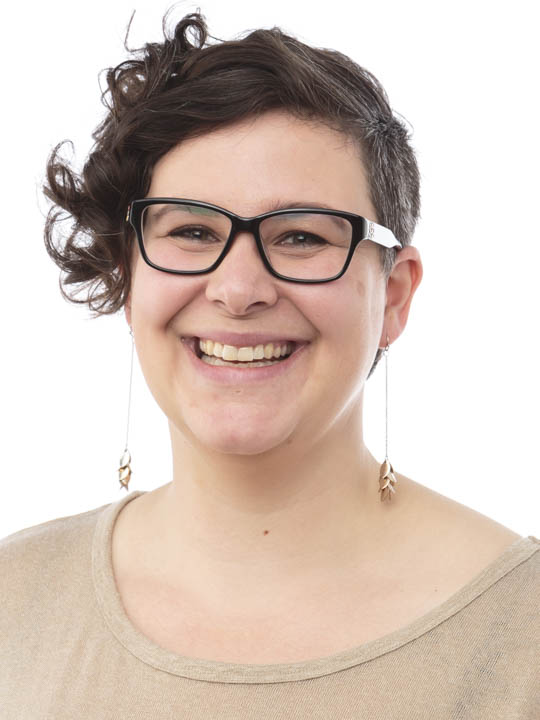The 5 Ps of a Successful Buyer-Seller Relationship (Part 1: Product) 9/16/2015
I received my MBA from a small school in San Francisco called Presidio before I became a grocer. While I did learn the basic definitions of 4 Ps in my marketing class in school, I definitely got an education in their nuances the year I became a buyer at Raley’s. Product, placement, pricing and promotion are the four forces that guide our everyday actions as buyers for retail chains.
As a buyer, every day is different, and that means emphasizing different Ps on different days. Some days may be more product focused, for example, when we visit shows like ECRM, looking for new products to satisfy our category needs. Others may be more pricing focused. Still, sometimes it feels like the majority of the days are promotion focused, as we write our ads every week and corral funding for different promotional activities. But all four must be addressed, and we can’t accomplish any of them without our vendor partners.
The 5th P
What you don’t learn in school or in buyer training is the fifth, most important P: Partnership. Truly, buyers could not do their jobs without those vendors that are true partners.
Some vendors naturally seem more like partners than others – for example, at Raley’s, we have our data partners Nielson and dunnhumby, as well as our private label partner Daymon in house. It’s easy to understand how our success is mutually dependent when you see those vendor partners in your team meetings every week, at the water cooler and in the morning before coffee (maybe I should be apologizing to these vendor partners for my pre-caffeinated self!).
But every vendor that comes through the door has the potential to be more than just a salesperson or a broker to us: they have the opportunity to be a vendor-partner. And many of them already are! That’s what I’ll be covering in this four-part series of articles: how buyers and vendors can reinterpret the 4 Ps to better align themselves, thereby ensuring a more pleasant, mutually beneficial relationships. The columns will cover:
- How presenting the product your merchant is looking for will increase your chances of success;
- Once your product is on the shelf, how important it is to keep your seat warm by engaging your merchant in active product management;
- How to find the good middle ground -- also known as compromise -- when it comes to pricing;
- The hottest, most effective approach to promotional planning.
For this first part of the series, we’ll focus on product.
Product
Before I went to business school, I spent a summer working the line at a busy soul food restaurant. From 4am to 8am, I prepared pastries for the counter and for dessert; then from 8am to 3pm I worked the fryer, the waffle iron and the griddle (FYI: that bacon smell is impossible to wash out after four months).
One of the chefs that I had the great privilege of working for that summer taught me a great lesson in the vendor-merchant relationship. She told me a story about when she was the pastry chef at a famous Bay area restaurant.
One day, her produce distributor came to the back door of the kitchen and offered her some perfect cherries. And by perfect, I mean… Perfect. They were in season, local, beautiful, a deep, almost black red color, with a juicy flavor that was as sweet as stone fruit can be, meaty and substantive. It was such a delicious sample that she bought every case of cherries the vendor had, on the spot. When she took the delivery, however, the flavor wasn’t there. She called the vendor, furious; and he admitted that yes, he had given her a sample that was not representative of what she had received.
Suffice to say that she had the error corrected… And quickly (you don’t mess with Chef). Stocked with the perfect cherries, she proceeded to serve them, boldly, by themselves, as the dessert of the day: a bowl of perfect cherries.
I love this story because it really illustrates both sides of the vendor-retailer relationship. If you bring me exactly what I need exactly when I need it – you will be the recipient of best showcase possible for your product. But if you pull a bait-and-switch on me, or worse, don’t deliver at all on your promises… You’ll catch all hell from the chef. If you’re lucky! And if it’s your second offense, you can pretty much count on being disregarded and not considered for future category reviews.
At most vendor appointments, the merchant can count the vendor presenting new items. And hopefully, if all went as planned, that meeting coordinates with a merchant’s category review, so the merchant is looking for new items at that time. How serendipitous! But the unfortunate reality is that often, those new items don’t fit the merchants’ category needs. Vendors bring to us what they have that’s new, or items that need more placement and sales, regardless of whether or not the item is a great fit for that retailer’s strategic goals for the category.
Being a great partner means bringing us exactly what we are looking for – when we are looking for it. At Raley’s right now, for example, we are striving to grow our natural and organic item penetration. So if you have a natural or organic item, you should probably be presenting it to your merchant. But here’s the catch: you don’t have to present it in isolation. If you bring me what I need, I am much more likely to give you what you need – which may be a plus out on a legacy item that needs a boost.
Being a great vendor partner when it comes to product is just like the cherry story. Bring me a perfect cherry, and I’ll put it front and center. Bring me a lackluster cherry, and it may not even make its way onto the menu.
(Keep an eye out for next week, where we’ll focus on buyer-vendor partnerships as they pertain to the second P: Placement)

